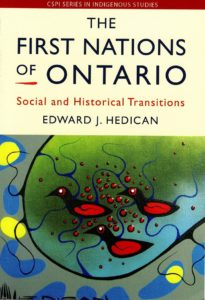Book Review: The First Nations of Ontario: Social and Historical Transitions
As a book, The First Nations of Ontario falls flat. Hedican optimistically takes up the challenge to trace the social and historical transitions across an entire province from its first peopling to the contemporary era in approximately 150 pages of text.
It is also intended as an introduction to First Nations of Ontario. The book, however, fails to offer an adequate introduction due to the overall summary or surficial nature of the work. It is also apparent, from chapter to chapter, that the author has a better handle on some topics than others. For instance, the section dealing with the conflicts in the 1600s is based on old theories and ideas from the 1940s and 1950s without reference to newer Indigenous and non-Indigenous scholarship nor to First Nations’ voices.
Additionally, the conflict between the Wendat and Haudenosaunee in the 1600s is rendered as a mere feud between similar peoples. Such language denies sovereignty and nationhood of these peoples in favour of the general normative narrative in Western-based texts that Indians were band or tribally-based societies. Overall, the reliance on dated scholarship is a problem in several chapters: the work also needs a proper proofread to fix date errors and eliminate repetition.
Finally, Indigenous voice also appears to be lacking, despite claims to the contrary. For instance, no references are made to the various Wampum belts and associated agreements between First Nations or even those with the French or English. Hence, the book as an overall survey of First Nations of Ontario is not the best place to begin learning. It lacks First Nations voices and up-to-date literature as well as replete with chronological mistakes and the resulting interpretive errors. There are better books available.
Edward J. Hedican, The First Nations of Ontario: Social and Historical Transitions. Toronto: Canadian Scholars, 2017.


